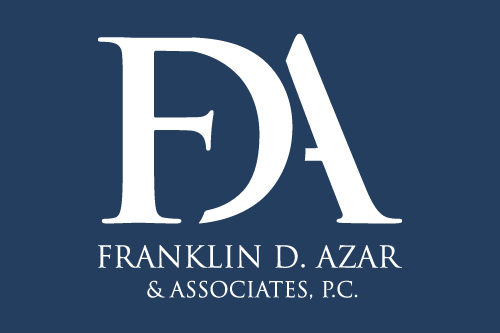For more than a century, talcum powder has been marketed to Americans as an essential hygiene item — pure, soothing and gentle enough for babies, a luxurious after-bath indulgence for ladies of quality. Or, as one vintage ad for the iconic Johnson’s Baby Powder puts it: “Antiseptic. Delightful. Warranted to Heal.”
But these days talcum powder doesn’t have quite the healthful, wholesome image the old ad campaigns suggested. Thousands of women and their families have filed lawsuits against Johnson & Johnson and other talc makers, claiming that using the product led to the development of ovarian cancer. Although the industry has strongly contested such claims, some researchers believe there’s a strong scientific basis for such a link. Questions about the purity of the talc, the possibility of contamination with asbestos, and other concerns have also played a part in the litigation, which has resulted in some sizable plaintiff verdicts — and more questions about just how “healing” consumers’ experience with talc has been.
What is Talcum Powder
Talc is a naturally occurring mineral, composed primarily of silicon, magnesium, and oxygen. Ground into powder, it’s long been used externally to absorb moisture and prevent rashes.
Talcum Powder Causes Ovarian Cancer?
But the extremely fine particles can also migrate to places they aren’t supposed to go, through inhalation or other means. Several research studies indicate that women who apply talc on a regular basis to their genital area may be at higher risk of developing ovarian cancer, as the particles travel through the vagina, uterus and fallopian tubes to the ovaries; in reports dating back to the early 1970s, talc particles have been found in some ovarian tumors.
Other studies have disputed those claims. The American Cancer Society notes that the scientific findings regarding a cause-effect relationship between talcum powder and ovarian cancer has been mixed, “with some studies reporting a slightly increased risk and some reporting no risk.” The Food and Drug Administration has rejected efforts to require a warning label on talcum powder but is still researching the issue. Meanwhile, the International Agency for Research on Cancer, an agency of the World Health Organization, has concluded that perineal use of talc-based body powder is “possibly carcinogenic”, while the National Cancer Institute, which once adopted a similar view, has recently retreated from that position, saying a link has yet to be proven.
In the United States, ovarian cancer causes 14,000 deaths a year, with 22,000 new cases being diagnosed annually. In its early stages, the disease is often difficult to detect because it may not manifest any symptoms, or those that do occur — such as abdominal pain, fatigue, bloating or changes in bowel movements — can be attributed to something else.
Johnson and Johnson Talcum Powder Lawsuit
Risk factors include a family history of breast or ovarian cancer or mutations in the BRCA genes, which can lead to several types of cancer. But there are now more than 6000 lawsuits pending from women who believe they developed the disease from talc products. Johnson & Johnson has been found liable by a jury in several of the cases involving its products that have actually gone to trial so far, but at least two of those verdicts have been overturned by judges, including a $417 million award last fall to a terminally ill woman in California who had used J & J talc products for decades.
The controversy over talc has become more heated as additional claims have emerged, challenging the purity of the product. Talc and asbestos often occur naturally in close proximity to each other, a situation that requires close monitoring and testing of the talc mined for cosmetic purposes. Johnson & Johnson has been testing its sources of supply since at least the early 1970s and maintains that its products are free of any traces of asbestos. But plaintiff attorneys say that internal documents obtained in talc lawsuits indicate that the company “has known for decades that its talc products include asbestos fibers and that the exposure to those fibers can cause ovarian cancer,” according to a Bloomberg news report.
In one of those documents, a mine official warned that asbestos materials “are potentially present in all talc ores in use at this time.” Johnson & Johnson representatives have maintained that no asbestos contamination was ever found, and that references in the document trove to possible “sub-trace quantities” of asbestos fiber simply indicate the company was being thorough.
The documents apparently played a significant role, though, in a $117 million verdict against J & J and a supplier in New Jersey this spring. Plaintiff Stephen Lanzo III and his wife claimed that he had contracted mesothelioma, a type of cancer caused primarily by asbestos exposure, as a result of using talc products over a period of 30 years. The jury awarded compensatory and punitive damages, ascribing 70 percent of the liability to Johnson & Johnson and 30 percent to the supplier, Imerys Talc America Inc.
The verdict will undoubtedly be appealed. An attorney for Johnson & Johnson has described the supposed link between talc and asbestos as “junk science.” But the attorney for the Lanzos told the jury that the company concealed the alleged asbestos in its talc from customers by conducting tests that wouldn’t detect the contamination.
As the legal and scientific scrutiny of talc products continues, consumers who rely on a daily talc routine may want to consider possible substitutes, such as a cornstarch-based product.
Product Liability Lawyer:Talcum Powder Lawyer
If you or a loved one have suffered injuries as the result of a defective product or medical device or experienced adverse consequences from taking a prescription drug, the product liability lawyers at Franklin D. Azar & Associates may be able to help.
For more than 30 years, our product liability attorneys have protected the rights of individuals who have been taken advantage of by big corporations; during that time, we have secured for our clients more than $1.5 billion in compensation. FDAzar has been and is involved in mass tort and class action lawsuits against large corporations such as Toyota, Hewlett Packard, British Petroleum, drug and medical device manufacturers, and 401(K) providers. Call us today or contact us here for a free, no-obligation consultation.
Free case evaluation. Contact us now!



